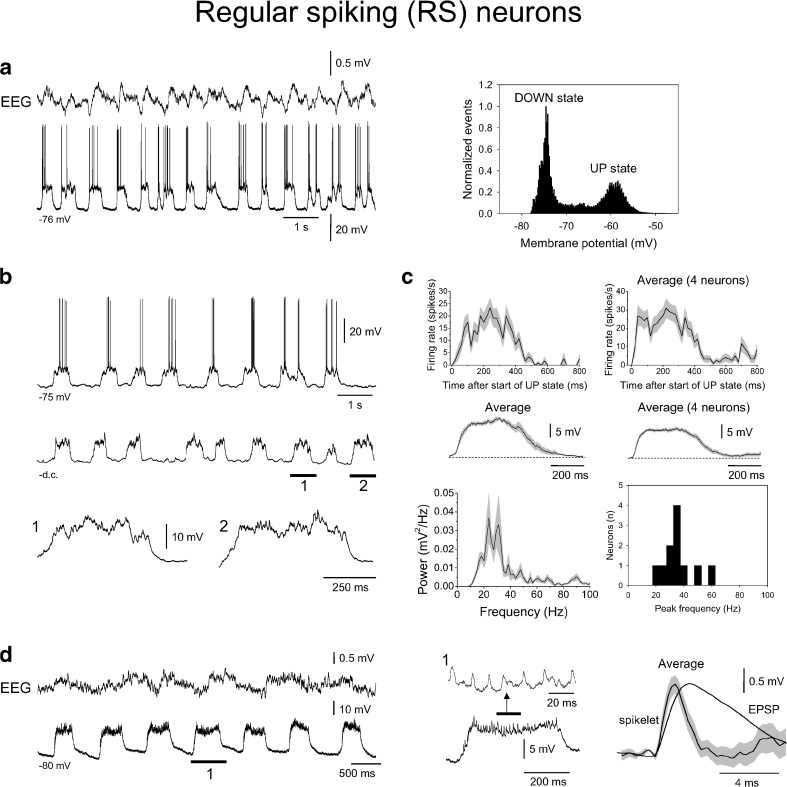Fig. 6.
Intracellular recordings of layer 5 RS neurons during the slow rhythm. a Combined EEG and intracellular recording of a layer 5 RS neuron during the slow rhythm, showing clear UP and DOWN states (cf. Fig. 2a, top). The plot to the right shows the related membrane potential distribution which exhibits a bimodal form with two clear peaks corresponding to UP and DOWN states. b Intracellular recording of a different RS neuron from layer 5 during the slow rhythm which also shows prominent UP and DOWN states. The trace below shows the activity of the same neuron after injection of steady hyperpolarising current to prevent action potential firing. The underlined sections are enlarged below as indicated and show the presence of intense synaptic activity during UP states. c Top left average firing rate for the neuron shown in b for 20 UP states. Top right average UP state firing for four different RS neurons. Note how for these neurons firing is essentially stable for ~400 ms (i.e. the duration of an UP state) before declining. Middle row average waveforms for subthreshold UP states for the neuron shown in b (left) and for four different RS neurons (right). Note how these waveforms qualitatively match the time-course of the average firing rates shown above. Bottom left average power spectrum for 20 subthreshold UP states from the neuron depicted in b shows a peak around 20–30 Hz. Bottom right histogram showing the mean peak frequencies for subthreshold activity during UP states from 11 RS neurons. d Combined EEG and intracellular recording of a layer 5 RS neuron in the presence of steady hyperpolarising current to prevent action potential firing. The underlined section is enlarged to the immediate right and shows the presence of spikelets during UP states. The traces to the far right show an average spikelet overlaid by an average EPSP (constructed from a different neocortical RS neuron). Note the considerably faster rise and decay times for spikelets compared to EPSPs

